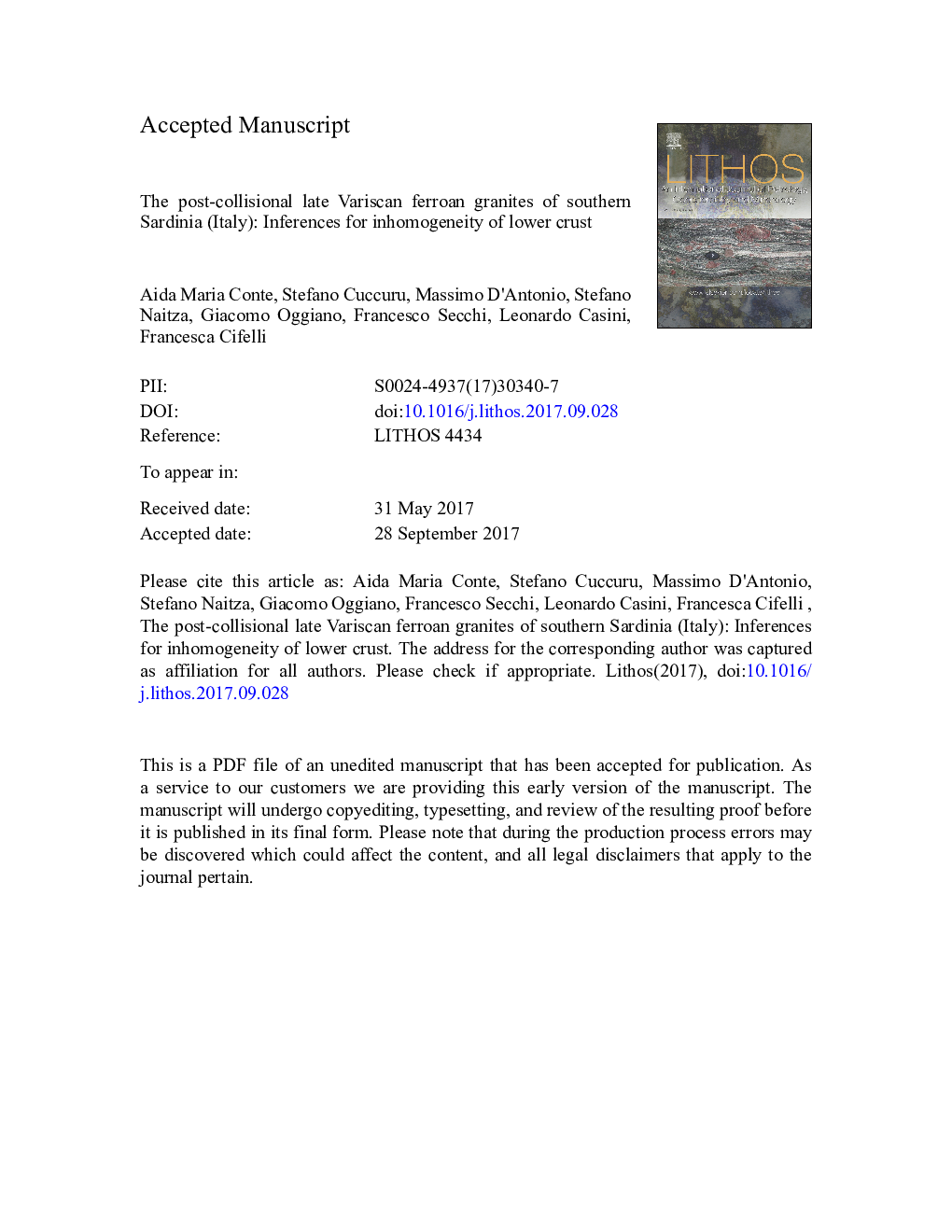| کد مقاله | کد نشریه | سال انتشار | مقاله انگلیسی | نسخه تمام متن |
|---|---|---|---|---|
| 8911839 | 1638625 | 2017 | 64 صفحه PDF | دانلود رایگان |
عنوان انگلیسی مقاله ISI
The post-collisional late Variscan ferroan granites of southern Sardinia (Italy): Inferences for inhomogeneity of lower crust
ترجمه فارسی عنوان
گرانیت های فرارن دیر ورشیسن فروردین (ایتالیا): نتیجه گیری برای عدم تناسب پوسته های زیرین
دانلود مقاله + سفارش ترجمه
دانلود مقاله ISI انگلیسی
رایگان برای ایرانیان
کلمات کلیدی
موضوعات مرتبط
مهندسی و علوم پایه
علوم زمین و سیارات
ژئوشیمی و پترولوژی
چکیده انگلیسی
Chemical variations in the studied samples suggest different magmatic evolution of independent magmas. Pb, Sr and Nd isotopic data constrain the origin of magmas to lower crustal sources. Chemical composition of rocks and dark micas meet those of liquids experimentally obtained by low degrees of partial melting of different meta-igneous deep crustal sources, felsic for GS1 rock-types and more mafic for GS3 rock-types. GS1 intrusions show granophile-type (Sn-W-Mo) metallogenic signatures, very low magnetic susceptibility, and Nd model ages (referred to the Depleted Mantle - TDM) of 2.3Â Ga, coherent with a possible derivation from an old (early Proterozoic-Neoarchean), reduced and weathered basement, tectonically buried under Variscan covers. A definite deep crustal inhomogeneity is mirrored by GS3 granites, whose compositional and isotopic features indicate a younger (Nd model age: 1.6Â Ga) tonalitic amphibolite source. Overall, the peculiarities of the studied granitoids suggest further compositional differences in the deep crust between southern and northern portion of the Sardinia-Corsica Variscan transect. Late Variscan lithospheric delamination appears as the most reliable mechanism that may have determined the high thermal regime that triggered partial melting of the crust. The close field association, at 290Â Ma, of tholeiitic dike swarms and ferroan granitoids, supports this inference.
ناشر
Database: Elsevier - ScienceDirect (ساینس دایرکت)
Journal: Lithos - Volumes 294â295, December 2017, Pages 263-282
Journal: Lithos - Volumes 294â295, December 2017, Pages 263-282
نویسندگان
Aida Maria Conte, Stefano Cuccuru, Massimo D'Antonio, Stefano Naitza, Giacomo Oggiano, Francesco Secchi, Leonardo Casini, Francesca Cifelli,
